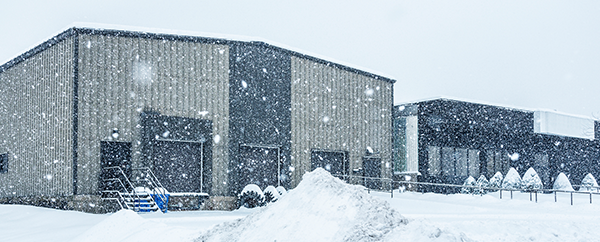
Winter weather may look magical, but the slush, ice and snow that come with it can make walking a treacherous activity. Slips, trips and falls are a leading cause of injury worldwide, and seasonal precipitation in winter months can greatly increase the likelihood of these types of injuries. Protect the people at your facilities by taking steps to prevent winter slips, trips and falls.
What causes a slip, trip or fall injury?
Many things can cause a slip, trip or fall. Compromised or uneven walking surfaces, inadequate indicators of sudden changes in elevation, inattention and distraction, improper footwear can all lead to injury.
Unfortunately, it doesn’t take much to create conditions that can cause an accident. A small deviance in ground height is enough to constitute a tripping hazard. Other seemingly minor factors, such as damp floors or a crumbling sidewalk edge, can also cause someone to slip. Proper maintenance and care throughout the year is an important element of risk management. Even a well-maintained walkway in peak condition can become the site of a serious injury when you add snow, slush and ice.
How to prevent winter slips, trips and falls at your facility
Proper maintenance can be essential for preventing winter slips, trips and falls. It is also important to have a thorough understanding of your facility’s liability related to local laws and statutes regarding ordinary duty of care for shared access walkways, like sidewalks and parking lots. Even if your facility is not responsible for maintenance on surrounding walkways, you still may be required to notify whoever is responsible in a timely manner if you discover damage or dangerous conditions.
Related: Tribal workplace safety: give the boot to trips and falls
Regular maintenance for indoor and outdoor walkways
- Clearly mark any walkway defects or hazards.
- Notify the responsible party or repair walkway defects or hazards within 30–60 days.
- Mark any abrupt changes in elevation with highly visible paint or other reflective surface.
- Conduct regular housekeeping (sweeping, mopping, shoveling, floor walkway treatments, etc.) to keep walkways in good condition.
- Perform occasional inspections to detect any wear and tear before it becomes a problem.
Winter risk management tips for indoor and outdoor walkways
The following practices can help mitigate the risks of snow, slush and ice:
- Regularly check the weather forecast to anticipate periods of snow and ice removal.
- Stock up on deicer and traction materials such as grit and sand, and apply them as necessary.
- Ensure tools such as gloves, buckets and snow shovels are easily accessible and in good condition.
- For employees engaged in snow and ice removal:
- Inform them about the dangers of over-exertion and exposure in cold weather.
- Ensure they have adequate cold-weather clothing and appropriate footwear.
- Require them to take regular breaks from shoveling to avoid over-exertion and exposure injuries such as heart attacks and hypothermia.
- Install traction mats at all entrances and exits and check them periodically to ensure they are adequately preventing water buildup and slippery puddles from accumulating indoors.
- If your employees operate heavy snow-removal equipment such as snow blowers or snow plows, ensure these machines have been properly maintained and train employees on their use before operating.
- Review snow and ice removal policies, practices and procedures to ensure they cover all applicable areas to your facility, including:
- Entrances and exits
- Steps and ramps
- Sidewalks and curbs
- Parking lots and spaces
- Any other walkways and paths on your property
- Don’t forget to look up! Snow and ice accumulations on the roof may come down unexpectedly on passersby and require additional snow and ice removal from walkways.
Use these checklists to help you confirm you have addressed potential problem areas related to slips, trips and falls: Winter Weather Preparation, Snow and Ice Removal and Sidewalk Safety.
Related: How to keep employees safe from winter weather work hazards
Tips to avoid hospital trips
Proper maintenance is not the only way to prevent slips, trips and falls – all walkers should be aware of their surroundings. Consider posting signage with the following tips to remind walkway users how reduce the risk of experiencing a slip, trip or fall injury:
- Walk carefully and avoid rushing
- Watch where you are stepping to detect any potential hazards or slippery surfaces
- Wear the appropriate shoes for the weather
- Use handrails and other aids to help improve balance on steps and ramps
- Don’t walk distracted – keep your hands as free as possible for balance, and avoid using cell phones or consuming food and beverages while you walk
Don’t let walkway safety slip through the cracks
Winter is a special time of year for many, but it is not without its hazards. Use the information in this article to help prevent winter slips, trips and falls and keep your tribe or tribal enterprise injury-free. For more information, please contact your broker or tribal risk manager.
